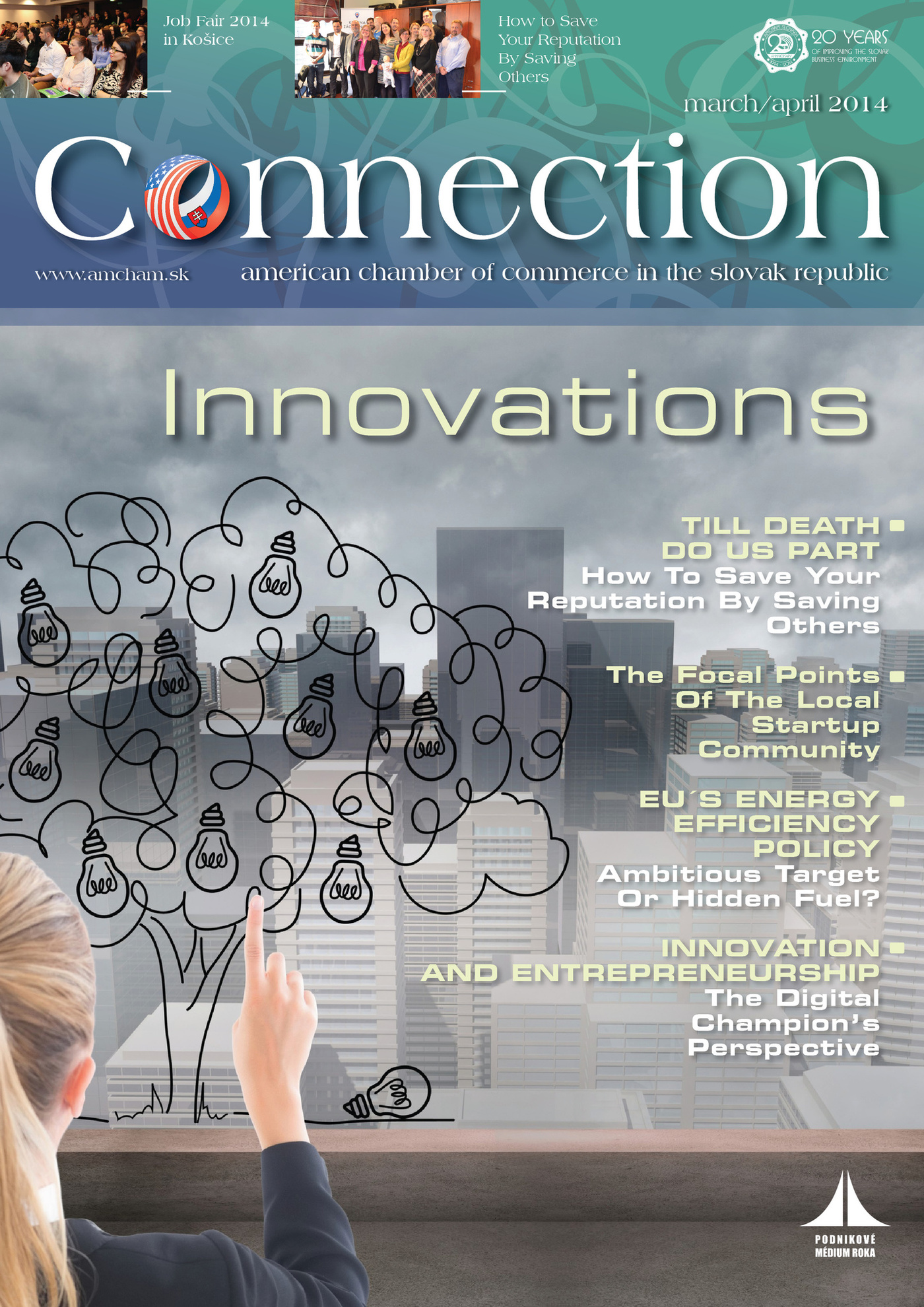The current practice of global firms demonstrates that if you want to be innovative, you have to engage with your employees. The best way to involve them is through creating an innovative environment, and convincing them that innovation could become a part of the company culture and way of thinking. To teach people to think creatively, various innovative and creative techniques are necessary. These techniques and tools are especially helpful in the process of generating new ideas. Some of them are also used during innovative seminars organized by KPMG in Slovakia. These seminars are part of the “Enjoy & Innovate” initiative, which includes innovation advisory services like Innovation Academy or Start-up Incubation Guidance.
Contemporary innovations can be viewed from various viewpoints. The new ways of categorizing them include “design-driven innovations” and “new experience innovations”.
The “design-driven innovations” are perceived from the point of view of the aesthetics of how the product or service looks, in essence, whether or not it is attractive to the customer. The “new experience innovations” are a result of the fact that people no longer want to purchase products and services that have already been on the market for a while. They want to own something that is brand new, and therefore has a new innovative significance, perception or interpretation. In this case, customers want to become a part of the innovation, e.g., in the case of 3D glasses, virtual reality, iPhone or Nintendo Wii. The key success factor in both cases is a passion for innovation and new ideas. The latest ranking of the top innovative firms worldwide was recently published by Forbes magazine. The innovation coming from within these companies, which include Nike, Google, Microsoft, Amazon, GE, Toyota, Samsung, Hitachi, Daimler and Facebook, is inspirational.
Prior to starting to create an innovative environment, a firm needs to clarify and unify its own concept. This means considering what innovation actually means for the company, what it represents and how it will be presented. Innovation should be a change that brings value, but it is an experience and fun at the same time. Innovation is also an ability to transfer ideas into business. The way that your employees understand and comprehend innovation is important in the creation of an innovative environment, not to mention in the culture of the firm.
Another important aspect to consider when creating an innovative environment is whether or not you can answer the following questions: Why do we want to innovate? What do we expect from innovation? Will involved parties benefit from it? These are just some of the many things to consider. The answers to these questions, in general, should show that we, as a firm, want to be the best in the market. And this is not all, they should also show that we want to create new products and services which will secure growth, increase turnover and attract new customers.
Firms that would like to innovate often encounter problems that stall any potential innovation. Five of the primary barriers are:
1. a lack of time for innovation,
2. the low priority of innovation within a firm (innovation is not taken seriously),
3. a lack of motivation (why do I have to innovate and come up with ideas?),
4. employees’ fear of change,
5. an excessive dependence on a parent company (in some cases).
When creating an innovative environment within a firm, it is necessary to think about other related areas, including:
- workplace design – create a creative premises, for example, in the way that Google, LEGO or Nike have done,
- knowledge – understand new innovative principles and education in the field of innovation,
- experience – experiment and learn from site visits,
- the behavior of others – follow the example of leaders in innovation, and get inspired by the top global innovators,
- motivation – search for inspiration and opportunities for new ideas and solutions.
According to the global KPMG Technology Innovation Survey 2013 , the top motivational factors behind Slovak innovation are financial bonuses and the allocation of paid time for innovation. In Slovakia, we differ from the rest of the world in regards to which department within a company is responsible for the highest level of innovation. Globally, it comes from R&D departments in particular (38%) as well as IT departments (32%); in Slovakia the majority comes from regular employees (32%) and external customers (32%).
It is clear that employees need space and time to innovate, so if we are to take innovation seriously it is important to give them this opportunity. If you ask for their opinion and give them the space to share their ideas and inspirations, it will contribute not only to their satisfaction but also to the success of the company as a whole.
My recommendations for a successful start are:
1. Make innovation the number one priority,
2. Allocate the time, space and finance for innovation,
3. Make innovation teams with manifold thinking,
4. Use IT tools to gather innovative ideas,
5. Extend your knowledge – educate yourself in the field of innovation,
6. “Get out of the building” – get closer to your customers and gather feedback,
7. Try to innovate like start-ups. Experiment.
Vladimír Švač, Head of Innovation Advisory Services



Follow us